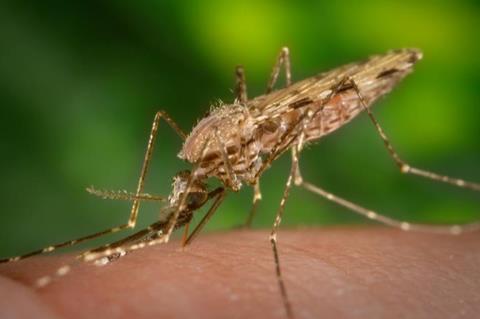Malaria, spread by Anopheles mosquitoes, is one of the deadliest diseases in the world. In Kenya, malaria remains a major health challenge, particularly for children under the age of five years. With over 5 million cases reported annually, climate change is expected to exacerbate the situation by enabling the disease to spread to new areas.
A new study published in the International Journal of Health Geographics by researchers at the Swiss Tropical and Public Health Institute (Swiss TPH) and the Kenya Medical Research Institute (KEMRI) offers key insights into how climatic factors like rainfall and temperature, combined with socio-economic changes such as urbanization and malaria control interventions, are affecting the spread of malaria in Kenya.

READ MORE: Maternal antibodies interfere with malaria vaccine responses
“By employing advanced geostatistical models based on national malaria surveys conducted between 2015 and 2020, we found that despite a decline in malaria overall, there was a significant rise in malaria risk in some regions, particularly in northern Kenya,” said Bryan Nyawanda, scientific collaborator at Swiss TPH. “Our findings show that public health measures must adapt swiftly to combat malaria amidst changing environmental conditions.”
Malaria trends and climatic factors
The study found that between 2015 and 2020, Kenya saw a promising decline in overall malaria prevalence, falling from 8% to 6%, particularly among children. There was a 31% reduction in children under the age of five years, and a 26% reduction in children aged 5-14 years. These findings reflect the positive impact of malaria control measures, specifically use of insecticide-treated nets (ITNs), indoor residual spraying (IRS) and anti-malarial treatments.
However, in northern Kenya, malaria cases surged. In places like Turkana, malaria risk increased by three to four times. The study suggests that higher rainfall and temperature create ideal mosquito breeding conditions, and changes in land use, such as mining and deforestation, may have contributed to this rise.
“The overall reduction in malaria is encouraging, but the surge in certain regions shows how unpredictable the impact of climate change can be,” said Penelope Vounatsou, Head of the Biostatistics unit at Swiss TPH. “This points to the need for more localized strategies to address these emerging challenges.”
Urbanization and climate variability
The study also examined the impact of urbanization on malaria. Areas with increased development, indicated by brighter nightlights, showed lower malaria rates. This decline is likely due to improved infrastructure that reduces human exposure to mosquitoes, as well as better access to healthcare and preventive tools.
Interestingly, the link between increased rainfall and malaria, which was strong in 2015, had weakened by 2020. This suggests that other factors, such as urbanization and malaria control efforts, are playing a growing role.
Adapting public health strategies
The findings emphasize the need for targeted, region-specific malaria strategies that account for seasonal and climate differences. Although malaria prevalence has fallen in Kenya overall, the rising risks in some low-risk and semi-arid regions show that ongoing monitoring and localized interventions are essential.
Traditional tools like ITNs and seasonal chemo-prevention need to be complemented with new approaches, such as spatial repellents and next-generation insecticides, to protect vulnerable regions. “The changing climate calls for innovative solutions,” added Nyawanda. “By understanding how environmental and socio-economic factors interact, we can better allocate resources and adapt strategies to protect the most at-risk populations.”
As climate patterns shift globally, countries facing similar challenges can use geostatistical models like those from this study to better understand malaria trends and develop tailored strategies. This research offers valuable insights for addressing both malaria and climate change worldwide.
Topics
- Anopheles
- anti-malarial treatments
- Bryan Nyawanda
- Climate Action
- climate change
- environmental factors
- indoor residual spraying
- Infectious Disease
- insecticide-treated nets
- Kenya
- Kenya Medical Research Institute
- malaria
- Middle East & Africa
- mosquitoes
- One Health
- Penelope Vounatsou
- Research News
- socio-economic factors
- Swiss Tropical and Public Health Institute
- UK & Rest of Europe







No comments yet